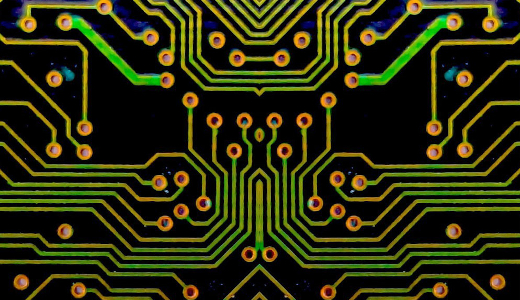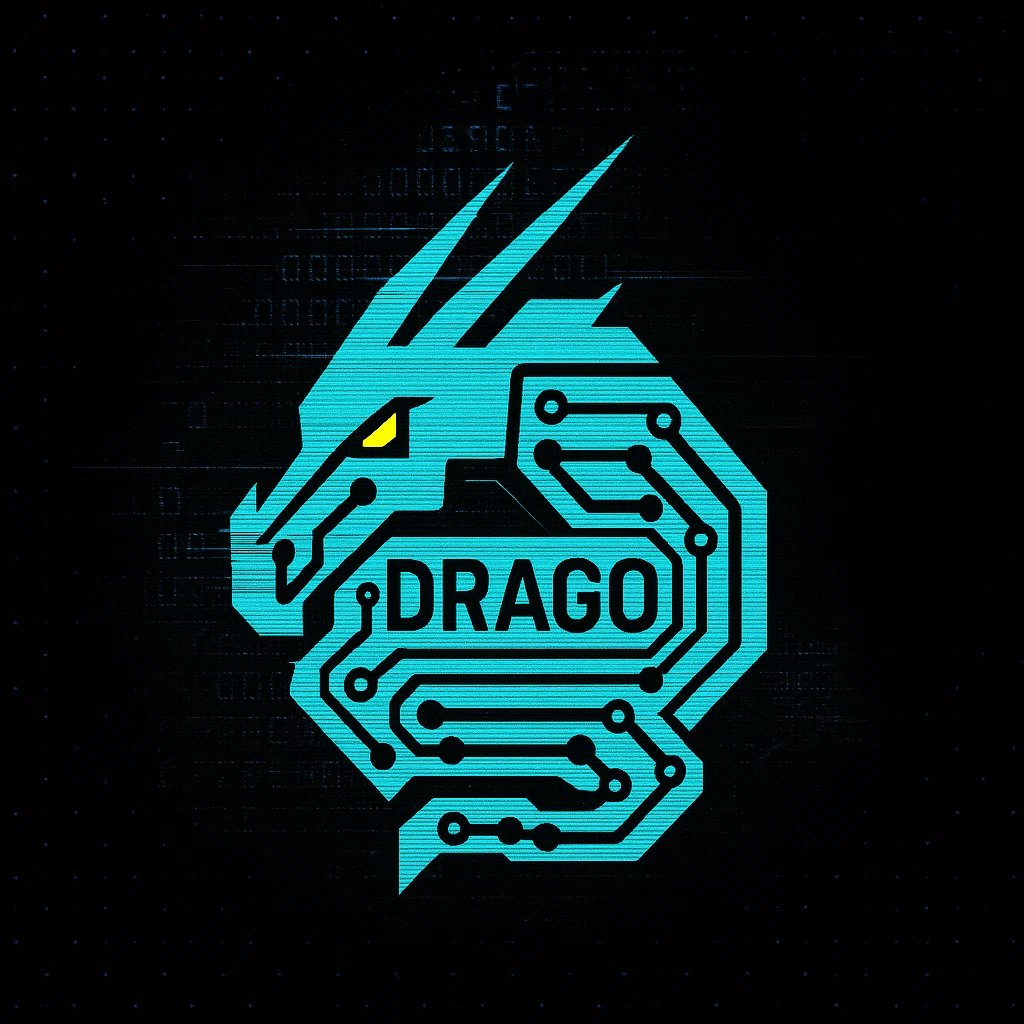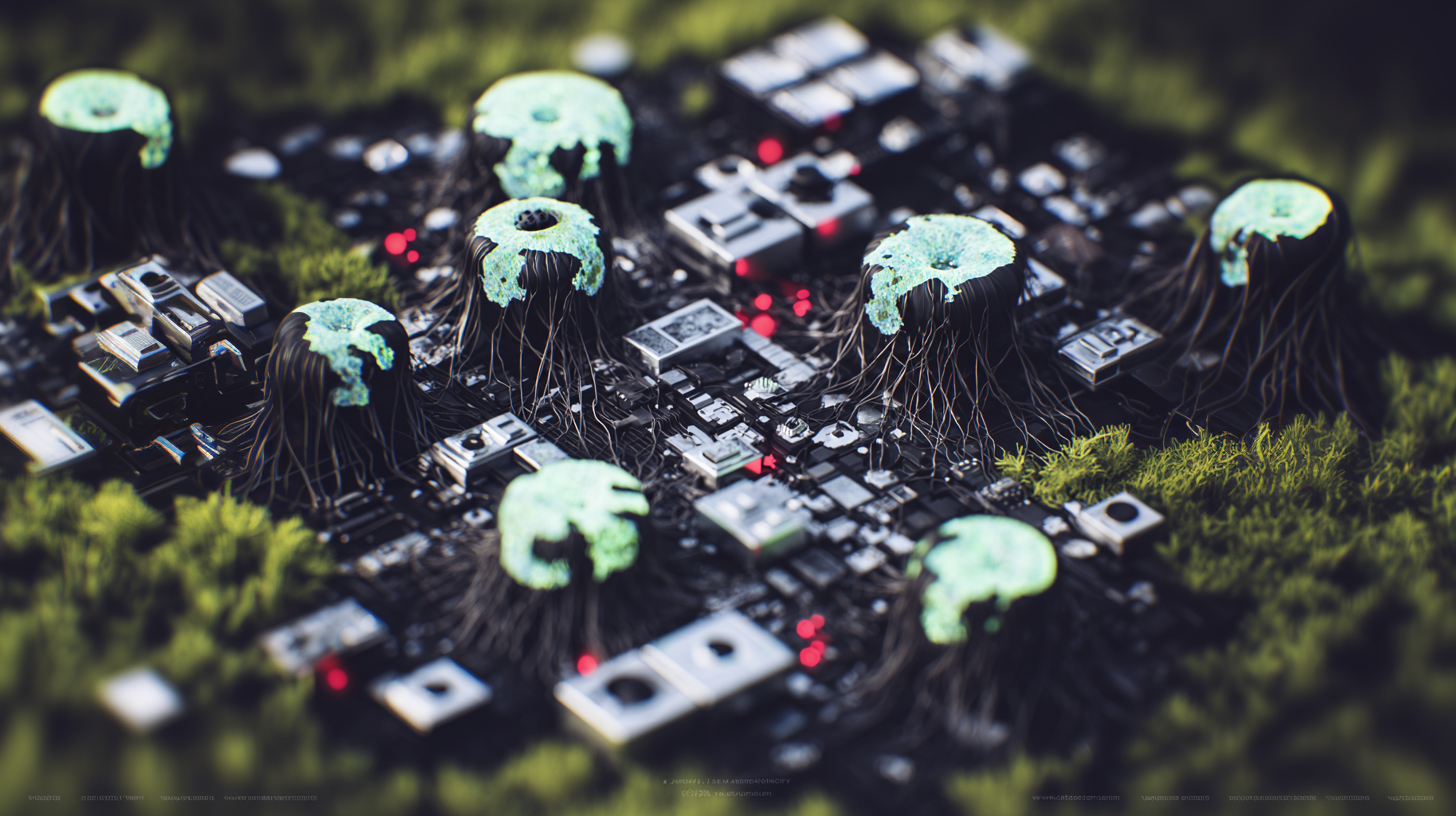Dragon’s Tullus Project – A Sonic System That Remembers
Dragon and The Tullus Project – this one’s interesting for me in a lot of ways. Not merely because of how it sounds, but because of how it came to be.
When Peter Adjobia (who performs as Dragon) first reached out in mid-June with a demo and a simple greeting, I recognized someone I’d followed before. He ran RYU Recordings, and I’d tracked his earlier experiments—textures, abstraction, ambient noise folded into IDM frameworks. I enjoyed his past work on Audio Denaturation and In The Year Of …
But this time there was intention. He wanted something more detailed, more themed—something that wouldn’t just sit on the playlist but live inside a system.
The moment I pressed play on the demo of what became The Tullus Project I realised this wasn’t a bridge between eras, it was a statement. Clean Error, has always been story-driven: glitch, machine–human interface, aesthetics of failure and architecture of noise. Dragon’s concept aligned with all of that so clearly that it felt like the next node in our evolution.
He named it The Tullus Project, described the ten phases, and I laid out imagery, relays beneath ice, fungal networks, neural archives coded in sound. My first impression: this could work not just as sound but as system.
What really struck me was how his conceptual ambition seemed matched by his craft. He didn’t just promise theme; he delivered depth. He rearranged demos, added tracks, removed others, until the album worked like an ecosystem. Bonus tracks aren’t “leftovers”(He hates that concept by the way, hehe) – they’re branches of the same signal. When you purchase the record, there’s a hidden directory, separate yet part of the architecture. 🙂
Who Dragon Is (The Refractant)

Peter—Dragon—is not a typical producer. He runs RYU Recordings, he explores denaturing audio, breaking structure. His EP Audio Denaturation explicitly described sound “unfolding or breaking up,” and his style has always leaned toward textures and frameworks rather than dancefloor clarity.
In Clean Error terms I call him a “refractant.”
That means someone who doesn’t simply transmit a signal – they bend it. The term “Refractant” was introduced back when we released Errormatic Vol.4, and its used as a title for the artists on Clean Error. They accept the machine’s influence and redirect it. In his work, synthetic pulses meet organic decay, glitch meets fungal growth. He bends the system instead of trying to control it fully.
That method suits this project: The Tullus Project is not about craftsmanship alone, it’s about letting sound live.

When I began constructing the DRAGON-333 identity, the mission wasn’t to make a logo. It was to build a glyph system—a symbol network that could morph, scale, and evolve depending on where and how it was summoned.
In the Clean Error Universe, identity isn’t static. It’s reactive, contextual. A logo might appear on a drop capsule, then later etched onto a circuit shard, or embedded in the corner of a corrupted learning terminal. DRAGON-333 was designed to survive those jumps.
This led me to build four distinct logo modes – each one with a different logic, mood, and purpose. I didn’t want variation just for aesthetic reasons…I wanted each form to express a different layer of the system’s function and personality.
🅐 MONOLINE ANGULAR GLYPH (LOGO A)
This was the pure symbol form. A minimalist expression of motion, intensity, and creature-like recognition. Designed with negative space precision, it activates quickly in the mind—evoking both a mythic dragon head and a stylized circuit pulse.
This is the signal glyph, used for high-speed UI overlays, badges, and wearable patches.
It’s clean. Fast. Iconic.
🅑 VECTOR-RHYTHM WORDMARK (LOGO B)
This version behaves like sonic typography – a literal nameplate constructed with sharp, shifting angles and embedded vectors. It plays with pressure and weight, hinting at digital aggression and creative velocity.
It’s the version most often seen on media drops, title screens, and motion blur intros.
Think of it as DRAGON’s voice…spoken in type.
🅒 CIRCUIT-BODY IDENTITY (LOGO C)
This is where the language gets deep.
LOGO C is a diagrammatic badge, resembling an etched board or micro-spine. It’s built from modular linework that references both neuromorphic circuits and spinal memory paths. Inside, the letter “D” is woven into the pattern like a carrier signal.
This version isn’t just for display—it’s for integration: hardware tokens, embedded firmware emblems, and Clean Error system relics.
🅓 NARRATIVE STAMP GLYPH (LOGO D)
Finally, LOGO D is the narrative artifact. It’s what appears in archives, redacted files, or the edge of a bootlegged sector map. The full word “DRAGON” is encoded in its shape but it’s hidden, obscured by a storytelling circuit shell.
This version is meant for lore. It’s less brand, more myth mark.
Peter went with an altered version of A and so I combined it with cicuitry and got this:

DRAGON’s Logo was born, and the “N” isn’t missing, the circuit is displaying it. And it took 5 iterations, from the logo sheet.
The Genesis of The Tullus Project
Visually and thematically, it all fits: the cover art, the layout, the way the release functions like a system rather than simply a playlist. At the core of the project is this idea: what if sound remembers? What if language breaks down and rebuilds? What if fungal networks (growth, interconnection, decay) are metaphors for audio systems?
In his phases—The Sentinel Awakes, Black Sun Protocol, Lingua Fracta, Communication Lost—you hear these metaphors in action. The record doesn’t ask you to just listen. It invites you to inhabit.
It’s one thing to make a track. It’s another to make a memory archive in audio. Clean Error has always existed in the space of collapse and reconstruction; this record makes the collapse the structure.
To me, that’s what elevates it. The work isn’t just glitchy or atmospheric, it’s built on a logic of mutation, rather than resolution.
Sonically, this record doesn’t sit comfortably in any category. It doesn’t lean into club rhythm or ambient placidity. It lives in tension. You’ll hear textures that wobble off-grid. Melodies that finish early or overshoot. Rhythms that breathe instead of repeat. It’s unpredictable but intentional. Where IDM often tried to polish machinery, here the machinery breathes, errs, and recalibrates. It’s the difference between using machines and being used by them.
Stand-out moments? You’ll feel them: a sudden glitch that isn’t glitch, a pad that decays into static, a beat that falls apart and rebuilds in fractal time. This is not background music. It’s a listening event.
From previous work at RYU, Peter’s method was already clear: textures over mass, process over polish. In The Tullus Project he reversed the dynamic: the machine is still present, but he engages it. He sets up generative systems, he lets probability tools run, he allows his own compositions to be derailed intentionally—and then he harnesses those derailments. In doing so he becomes the refractant: the person who doesn’t direct the machine but partners with it. The result? Sound that is human enough to remember and machine enough to mutate.
That method sits perfectly with Clean Error’s ethics: glitch isn’t a mistake. It’s a portal.
Legacy and Continuum
This release continues to push Clean Error’s vision forward. It’s part of the label’s lineage but also a branching out. It addresses questions I raised in Broken Flow about authenticity, algorithmic sound and genre fatigue.
For listeners, it isn’t just another album, it’s an experience, a system to enter. For the genre, it suggests one direction forward: less about virtuosity, more about architecture. Less about the human making music, more about the human being instrumented by music.
What stays with me after listening to The Tullus Project is not a beat or a melody…it’s a space. A zone where sound breathes, remembers and decays. If I had to pick one image: a fungal network of circuits, glowing under ice, the signal folded inward like thought. Peter built something here that moves and reflects. It doesn’t ask you to understand. It invites you to surrender. This isn’t just Dragon’s album. It’s a record of the moment the signal decided to speak back.
And it’s not just me who feels this way. As Igloo Mag recently described:
“Dragon’s The Tullus Project is a high-voltage plunge into the fractured circuitry of Clean Error’s Errormatic extension, fusing glitch-tech precision with post-human emotion. Blending scorched industrial noise, ambient distortion, and hyper-synthetic chaos, this is sonic architecture for explorers of a decaying digital frontier.”
— Pietro Da Sacco, Igloo Mag Review (READ MORE)
It’s rare to see a project balance conceptual weight with emotional resonance, but The Tullus Project does both.


